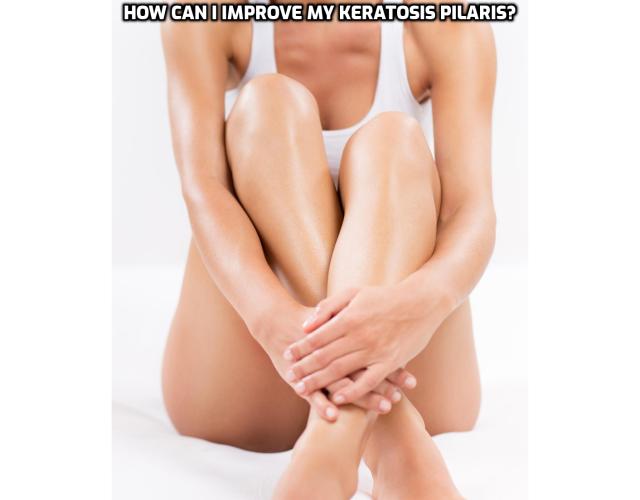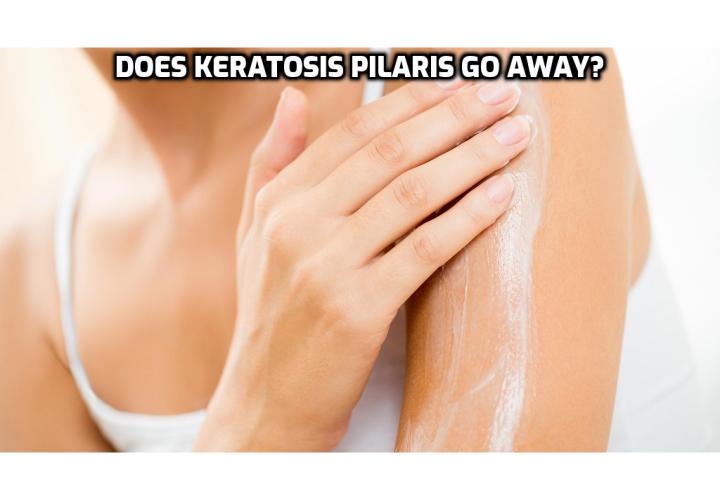Treatment
for Keratosis Pilaris - The Role of Diet in Minimizing Keratosis Pilaris
Individuals
with keratosis pilaris experience the buildup of
keratin, a protective skin protein, which leads to the formation of plugs in
hair follicles. Because the hairs cannot push through this blockage to the
skin's surface, raised bumps are created in fine-hair areas of the body, such as
the upper arms, the thighs, and sometimes the buttocks or even the face.
Although
keratosis pilaris is not medically serious and can
improve over time, some patients use treatments such as topical prescription
creams and clinical-strength moisturizers. Additionally, some
alternative-health consultants believe that skin problems indicate an
"internal imbalance," and therefore feel that they should be treated
by dietary changes. No associations between diet and keratosis pilaris have been validated by clinical
research, however.
Several
patients with keratosis pilaris maintain that eliminating
cow-based dairy products from their diet significantly reduced their symptoms.
Bovine casein, the primary protein in cow's milk, is sometimes cited as a
contributing factor to keratosis pilaris, as some people have experienced
improved symptoms after eliminating it from their diet once they reached
adulthood.
Vitamin
A deficiency may also resemble keratosis pilaris, but no vitamin deficiency is
known to cause keratosis pilaris. Some children who may seem to
have keratosis pilaris are actually suffering
from dietary deficiencies such as poor fat consumption.
Children
who obtain their dietary fats from processed food instead of from nuts, olive
oil, and fish can develop "chicken skin" that resembles the symptoms
of keratosis pilaris; these bumpy patches of skin,
however, are actually unrelated to keratosis pilaris. In these cases, taking fish-oil
capsules and including nuts, olive oil, and fish in the patient's diet will
cause the rash to clear, indicating that the patient did not actually suffer
from keratosis pilaris.
Because
keratosis pilaris is a chronic and recurrent problem, patients should beware
any claims that a certain diet can "cure" keratosis pilaris. If you
suffer from keratosis pilaris and are concerned about your diet, speak to your doctor or
dermatologist. He or she will be able to suggest at-home remedies and can also
recommend a registered dietician to help you plan and implement
healthy eating habits.
When to Seek
Treatment for Keratosis Pilaris
Keratosis
pilaris is a common, usually chronic skin condition that involves bumpy, rough
patches of skin along the upper arm, thigh, and buttocks. Individuals who
suffer from keratosis pilaris may not even be aware of their condition, as this
skin problem is often overlooked and rarely involves medical complications.
Some
patients, however, feel that they need to seek medical or alternative treatment
for their symptoms, as keratosis pilaris can lead to social embarrassment for
certain individuals or can create prolonged discomfort in rare cases.
Those
with keratosis pilaris should pursue treatment if their condition is causing
them concern or is impairing their ability to function in some way. For
example, certain patients experience psychological side effects such as anxiety
or low self-confidence because of the distress created by their discolored,
bumpy skin. In these cases, you should speak with your family doctor or
dermatologist, and possibly a psychologist or counsellor as well.
Other
people with keratosis pilaris may experience irritated skin as a result of
inflammation or may have scarring after aggravating the raised patches. In
cases like these, you should seek treatment from your family doctor or a
dermatologist to prevent lasting damage from occurring.
In
general, however, keratosis pilaris seems cosmetically unpleasant but is
actually harmless from a medical perspective. With the appropriate medications
and self-care measures, many people experience a noticeable improvement in
their symptoms.
Doctors
frequently suggest maintaining an effective home-based skincare to improve the appearance of your skin,
such as washing affected areas with warm water and a gentle exfoliating cleanser, using a rich
moisturizer two times a day, and installing a humidifier in your home during
dry seasons like winter.
Alternatively, your doctor or dermatologist may
suggest more substantial treatments such as topical corticosteroids to reduce
itching or topical retinoids to promote healthy cell turnover. Regular sessions
of laser therapy are sometimes recommended as well to combat severe
inflammation and redness in patients with keratosis pilaris.
However, it is important to remember that no therapy is
uniformly effective in alleviating the symptoms of all patients; furthermore,
the complete removal of keratosis pilaris is rarely possible.
For more ideas on treatment for keratosis pilaris, watch this
video - Treating
Keratosis Pilaris
This post is from the Keratosis Pilaris Remedy
program created by Alison White. Keratosis
Pilaris Remedy program is a step by step natural system through which
you can achieve a smoother and clearer skin in the shortest possible time. It
comes with a confidence-boosting skin cleanse that will help you in getting rid
of the Keratosis Pilaris condition.
You
will also get a recipe for a home-made face scrub with this product that is not
only very affordable to make, but also offer much more benefits as compared to
the expensive products available in the market.
The
author (Alison White) has also included her special Keratosis Pilaris diet
plan that includes some basic foods and make your skin to reborn and glow up
like your younger days.
Furthermore,
you will get the important information about the special ingredients that you
should consider while buying any skin product. These ingredients can be proved
very useful in eliminating the Keratosis Pilaris permanently.
To
find out more about this program, visit Keratosis
Pilaris Remedy Forever

